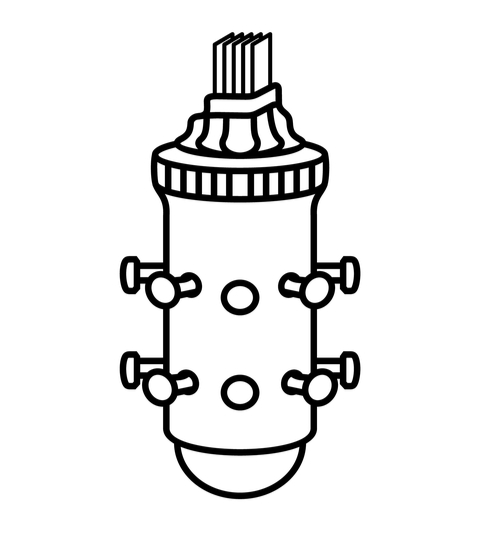The history of SMRs: an old concept back in the spotlight
At the very beginning of the nuclear industry, small reactors were built for simplicity before their power was gradually increased.
Revealed to the general public at the International Atomic Energy Agency (IAEA) General Conference on 18 September, 2019, SMR technology has actually been around since the 1950s.
The reactors went from 60 megawatts to 300, then to 800-900, 1,300-1,350, finally reaching 1,650 to 1,750 megawatts with the European Pressurised Reactor (EPR). Until 2000, the thinking was that, since the reactors were small, the economies of scale were smaller and, therefore, it was more costly. The dazzling increase in the power of nuclear reactors has thus responded to a strategy of economies of scale.
From the 2000s, the costs of building and operating nuclear reactors skyrocketed. Large power plants have become increasingly difficult to finance, rtwith state-guaranteed loans becoming scarce and interest rates increasing.
Now, a global trend has appeared, with a return to smaller reactors that are just as powerful.
The return of small reactors, with modularity to boot
While the concept of low-power reactors is nothing new, SMRs’ modularity is a new trend that the energy sector has only been interested in for a few years.
Since they are modular, they can be mass produced with a plant that assembles the final reactor. When it comes out, the SMR is ready to plug in.
This plug-and-play mindset can be found as much in its components as in the reactor itself.
The benefit? Quickly and easily replace one module with another when maintenance is due. In addition, small reactors are easier to finance since each one can get by with a smaller loan. Installing them requires less civil engineering, which reduces construction costs and time.
Several accidents involving powerful reactors such as in Fukushima, for example, have highlighted the need to reinforce safety: this is how passive safety emerged. While this is difficult to implement in powerful reactors, it is one of the major benefits of smaller reactors.
SMRs: what kind of ally for the energy transition?

SMRs are arriving in a world where environmental issues are at the heart of political and economic debates.
Every day, initiatives and proposals emerge to act in favour of a low-carbon world. The engineering sector naturally occupies a strategic place.
Small modular reactors, with their single modules, can be paired with other energy sources, such as renewable energies.
Renewable energies are said to be intermittent, meaning their availability varies greatly, especially solar and wind energy. For instance, we cannot decide when the wind will blow, yet the train must leave the station at a specific time. In this case, we need to find a replacement source that can complement the renewable one.
SMRs are able to produce energy when renewables cannot, and they can be then phased out when renewables are producing energy. Additionally, SMRs can allow isolated regions with less developed infrastructure to integrate into these hybrid systems.
The state of play in France and around the world
50
SMR models and concepts are in development or ready for use
170
million euros provided in the French stimulus plan budget to accelerate research on small modular reactors
SMRs are attracting growing interest internationally.
An increasing number of projects are emerging in the United States, Japan, China, India and Russia.
In all, 50 SMR models and concepts are in development or ready for use in the short term. The International Atomic Energy Agency coordinates the various SMR projects around the world in order to facilitate their implementation.
In France, a project called “NUWARD” (Nuclear Forward), a small French-style modular reactor, is supported by the French Alternative Energies and Atomic Energy Commission (CEA), as well as EDF, Naval Group and TechnicAtome.

This project will benefit from the best French technologies.
Based on pressurised water reactor (PWR) technology, NUWARD’s objective will be to meet the challenges of carbon-free electricity, safety and competitiveness.
In addition, the French stimulus plan provides a budget of 170 million euros to accelerate research on small modular reactors.
